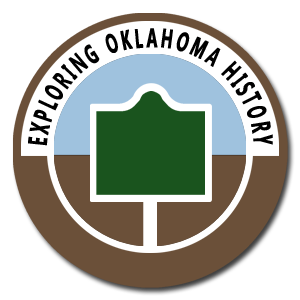Today in Oklahoma History
Custer arrives at Camp Supply
Wednesday, December, 2, 1868 – Col. George Custer arrives at Camp Supply after the Battle of the Washita. more...
Oil discovered in Oklahoma City
Tuesday, December, 4, 1928 – On this day oil was discovered in Oklahoma City. Oil wells popped up everywhere, even on the south lawn on the capitol building, and the sudden influx of oil money within the city and throughout the state greatly accelerated the city's growth. more...
Oklahoma Spaceport
Tuesday, December, 5, 2006 – The Oklahoma Space Authority took title to the Clinton-Sherman Airpark on December 5, 2006. The Clinton-Sherman Industrial Airpark, also known as the Oklahoma Spaceport is an authorized spaceport near Burns Flat, Oklahoma, in the western part of the state. It is expected to be a launch site for space tourism flights as early as 2008. The Federal Aviation Administration (FAA) granted a license to the site in June 2006 to the Oklahoma Space Industry Development Authority (OSIDA) to "oversee the takeoff and landing of suborbital, reusable launch vehicles".[1] The license expires in five years and requires regular safety inspections by the FAA. Individual operators must also secure a separate license in order to make space flights from the facility. more...
USS Oklahoma
Sunday, December, 7, 1941 – On this day the USS Oklahoma was hit by four torpedoes during a Japanese attack on Pearl Harbor, Hawaii. The next day on December 8th, the United States declared war on Japan, thus entering World War II. USS Oklahoma (BB-37), a Nevada-class battleship was the only ship of the United States Navy to be named for the 46th state. more...
U.S. Enters World War II
Monday, December, 8, 1941 – On this day the United States declared war on Japan after the attack on Pearl Harbor on December 7th. Germany declared war on the United States on December 12, 1941. more...
Battle of Chusto-Talasah
Monday, December, 9, 1861 – American Civil War -- Chief Opothleyahola and his Union forces were at Chusto-Talasah, or Caving Banks, on the Horseshoe Bend of Bird Creek when Colonel Douglas H. Cooper's 1,300 Confederates attacked. For almost four hours, Cooper attacked and attempted to outflank the Federals, finally driving them east across Bird Creek just before dark. Cooper camped there overnight but did not pursue the Federals because he was short of ammunition. The Confederates claimed victory. more...
Barry Sanders wins Heisman
Saturday, December, 10, 1988 – Barry Sanders of Oklahoma State University wins the Heisman Trophy. more...
Wilma Mankiller sworn in as Chief
Saturday, December, 14, 1985 – Wilma Pearl Mankiller becomes the first female Chief of the Cherokee Nation. more...
Babbs Switch Tragic School Fire
Wednesday, December, 24, 1924 – On this day 35 people lost their lives while attending a Christmas party in a one room frame school house. The fire was started by a candle on a Christmas tree. A school building was built here in memorial and a model to point the way to safer county schools the nation over. The school was discontinued in 1943. Was dismantled and sold. more...
Battle of Chustenahlah
Thursday, December, 26, 1861 – American Civil War -- Confederate troops had undertaken a campaign to subdue the Native American Union sympathizers in Indian Territory and consolidate control. They had attacked Chief Opothleyahola's band of Creeks and Seminoles earlier at Round Mountain and Chusto-Talasah. Now, they wanted to finish them off by assaulting them in their camp at Chustenahlah in a well-protected cove on Battle Creek. Col. James McQueen McIntosh and Col. Douglas H. Cooper, commanding the Indian Department, planned a combined attack with each of their columns moving on the camp from different directions. McIntosh left Fort Gibson on December 22, with 1,380 men. On the 25th, he was informed that Cooper's force could not join for a while, but he decided to attack the next day, despite being outnumbered. McIntosh attacked the camp at noon on the 26th. The Union defenders were secluded in the underbrush along the slope of a rugged hill, but as the Confederate attack came forward, the Native Americans began to fall back, taking cover for a while and then moving back. The retreat became a rout as the Federals reached their camp. They attempted to make a stand there but were forced away again. The survivors fled; many went all the way to Kansas where they found loyal Unionists. Chief Opothleyahola's band of Creeks and Seminoles mounted no resistance again. more...
Arkansas River Navigation Ready for Use
Wednesday, December, 30, 1970 – The Arkansas River Navigation project provides a minimum 9 foot deep channel with a total lift of 420 feet, 450 miles long, from the Mississippi River to the head of navigation at Catoosa, near Tulsa, Oklahoma. more...
